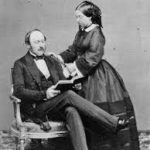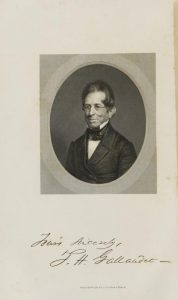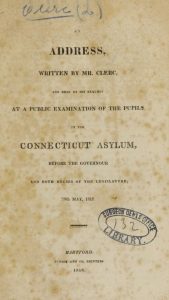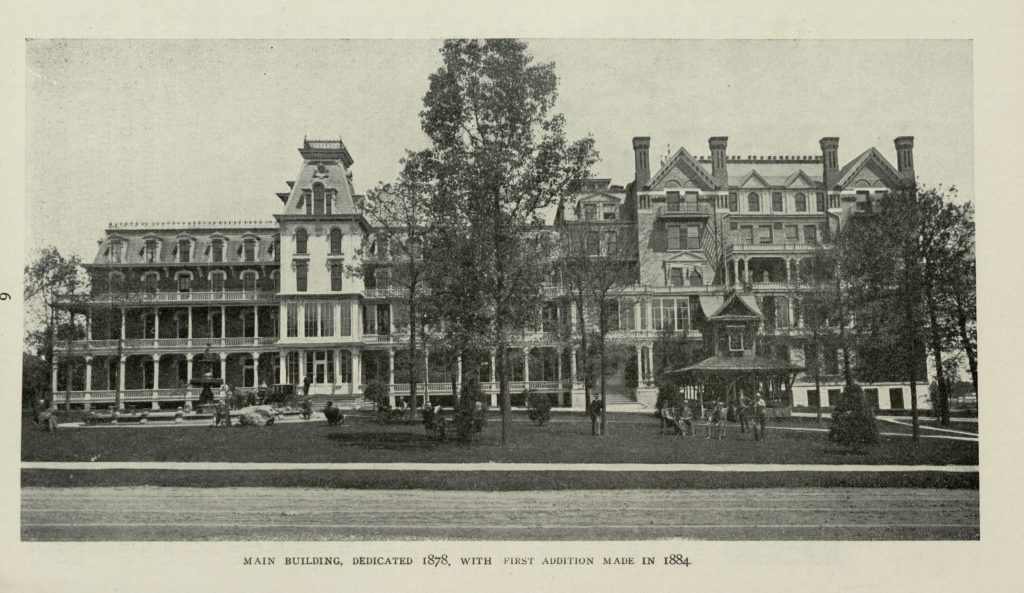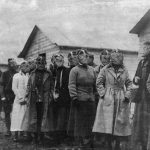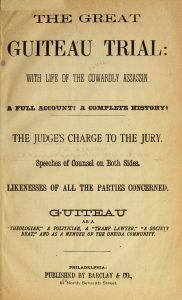Who among us has not experienced the dreaded throb of cranial pain that accompanies stress and anxiety? Headaches seem to be the physiological manifestation of modern life’s tensions: perhaps more so than aches in any other part of the body, pain in the head symbolically ties together physical, mental, and emotional distresses.[1] In popular culture, headaches are also seen as a particularly female trait – think of the old misogynistic joke about a woman pleading a headache as an excuse to avoid a man’s sexual advances. While acting as humor on the basis of supposed female frailty and sexuality, the alleged headache functions to indicate the inner conflict the woman has between the different demands she faces because of her gender and her will as an individual. Managing these clashing societal demands and personal desires is, as it were, a headache.
In my reading of popular nineteenth-century American novels by women, I have noticed an emphasis on women’s headaches as an indicator of the stresses of the modernizing world. Headaches emerge as a recurring trope in these novels about women navigating new gender roles amidst changing ideas about women’s self-actualization both in the home and in the workplace. For instance, in Sara Payson Willis’s semi-autobiographical novel Ruth Hall: A Domestic Tale of the Present Time (1854), she chronicles her titular protagonist’s climb from poor widowhood to successful writer. A proxy for Willis, a.k.a. Fanny Fern, the highest-paid columnist in the United States, Ruth is plagued by headaches throughout the narrative. Elizabeth Stuart Phelps, known as the author of one of the great bestselling novels of the century, The Gates Ajar, also channeled her personal and professional frustrations in The Story of Avis (1877). Avis wants to be an artist, but the constraints of the domestic sphere force her to temper her ambitions. In both novels, the headache is a ubiquitous refrain at points of tension between these women’s private lives and the various public demands they face. But what relation did these headaches as metaphor have to contemporary medical understandings of the phenomena? How might nineteenth-century medical literature allow us to better understand these ongoing cultural stereotypes about women’s headaches?
I researched these questions at the Historical Medical Library of the College of Physicians of Philadelphia as a proud recipient of a travel research grant from the F.C. Wood Institute for the History of Medicine. Texts I hoped to investigate that are in the Library’s collection included both standard and homeopathic medical publications such as Treatise on Headaches: Their Various Causes, Prevention, and Curse (1855), Nervous Headache: For Medical Profession Only (1880), and Headache and Its Material Medica (1889).
Unexpected hazard of research: turns out that it can be a challenge for a modern reader like myself to resist sympathetic pangs of pain when you spend hours reading detailed medical descriptions of headaches! Often referred to as the “nervous headache,” the “sick headache,” and the now obsolete term “megrim,” the medical literature consistently links the phenomenon to imbalances and abnormalities – such as being a woman. I joke not! It is often a vague historical truism that “people were sexist back then,” but it can be paradigm-shifting to read the specifics of how credentialed, authoritative professionals actively engaged in pathologizing women’s existence.
Female susceptibility to headaches apparently had to do with everything from the nebulous affliction known as “hysteria,” to menstruation, to mental and emotional excesses, to excessive education and literacy. Henry G. Wright, MD, in his Headaches: Their Causes and Cures (1856) alleges that women tend toward headaches for reasons ranging from “over-nursing a child” to exertion from reading “the contents of the circulating library from sheer want of better employment.” As for male sufferers of headaches, doctors associated their pain with emasculating deviancy such as masturbation, sedentariness, and “nervous” traits of emotional disturbances and anxiety. According to James Mease, MD, in On the Causes, Cure, and Prevention of the Sick-Headache (1832), “This disease is the result of our advanced state of civilization, the increase of wealth and of enjoyments in the power of most people in this country, and, I may add, of the luxurious and enervating habits in which those in easy circumstances indulge.” Western civilization itself is feminized.
During my visit I also found other striking materials that indicate how the spread of medical knowledge grew with the further development of print technologies. There was a mass-produced pamphlet aimed at medical professionals that advertised a “nerve tonic” for headaches and other nervous ailments based on coca, known for its role in the drug cocaine. On Nervous or Sick-Headache (1873) by Peter Wallwork Latham, MD, included reproductions of colored plates that demonstrated the effect of severe headaches with aura on vision.
One thing that must be stressed: the women who were the subjects of these medical treatises were white and from the middle, if not upper, classes. The pain of poor women, women of color, and other marginalized groups did not merit the same medical attention and were sometimes not considered to exist. In his same text, Dr. Mease alleges that headaches are “unknown among the natives of our forests.”
Finally, I hope to put this discussion of women’s headaches into a broader conversation about pain in medicine. The generous time afforded to me by the F.C. Wood Institute grant enabled me to peruse many other research interests related to women and medical science. I went through materials related to J. Marion Sims, MD, considered the father of American gynecology. He built his career on developing surgeries to fix fistulas – by practising on enslaved black women. In his writings, there was no mention of their pain.
In 2015, the journal Pediatrics, published by the American Medical Association, highlighted an editorial that reviewed a broad range of scientific studies on racial discrimination and pain treatment in medicine from the 1970s onward. Perhaps the question for us should not only be what the causes and manifestations of pain are, but also whose pain gets recognized.
[1] For more on the history of pain and medicine in America, I recommend Martin Pernick’s A Calculus of Suffering.
~This post courtesy Beth Lander and Christine “Xine” Yao. Ms. Yao just earned her PhD in English at Cornell University. Later this year she will begin her position as a SSHRC Postdoctoral Research Fellow at the University of British Columbia. She received an F.C. Wood Institute Travel Grant from the College of Physicians of Philadelphia in 2015.








